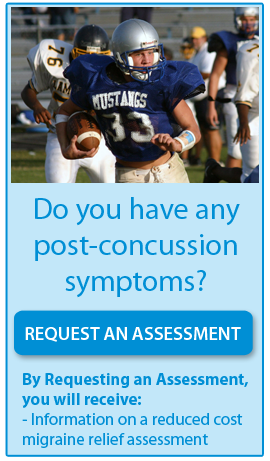Those are best handled by the on the field athletic trainer and the hospital emergency room. Sometimes there are head injuries that are more severe than a concussion that can only be properly diagnosed by CT scan. Once a more serious situation is ruled out, the best approach in the initial days after a concussion is physical and mental rest as well as proper nutrition to reduce brain inflammation.
After a thorough post- concussion neurological and neuro cognitive exam is performed in the initial days to weeks after concussion some patients are ready to begin our neurological rehab and some are not. We determine if a concussion patient is ready for early neurological rehab or if they need a continued rest only protocol on a case by case basis. The following is a research paper on rest protocols following concussion: http://pediatrics.aappublications.org/content/early/2015/01/01/peds.2014-0966.full.pdf+html
Typically when a concussion sufferer is still having symptoms after the initial 7-14 days after the injury they have post- concussion syndrome and are best cared for using specific functional neurological care.
Every concussion patient is different in when they need to start neurological rehab however proper nutrition is critical immediately after and in the early days after the injury.
We provide specific nutritional recommendations that can aid in decreasing brain inflammation and improving brain blood circulation in the acute period following the concussion. There are specific supplements and diet recommendations that are very helpful at precise times post injury. For example our acute concussion protocol involves specific diet recommendations and nutritional supplements given at specific points such 1 day, 1 week, 3 weeks post-concussion.
As Functional Neurologists we see post-concussion syndrome patients who do not get full neurological recovery both objectively and symptomatically by rest within the initial 30 days post injury. It is important to understand the majority of concussion sufferers that do feel better with rest may not really be recovered neurologically. It's essential that they have the proper testing done to evaluate all the potential areas of their brain that may be affected by the concussion. These areas are not limited to the cognitive areas of the brain tested by a neurocognitive test such as IMPACT but also the areas that affect balance, equilibrium, blood flow to the brain itself and other vital functions. Very often a concussion sufferer will pass a neurocognitive test such as IMPACT meaning the cognitive areas of the brain are functioning well, but they may still have serious deficits in other areas causing their symptoms. If a player goes back play with these deficits and functioning at less than 100% there is a greater chance that they will get hurt again.
Medications affect the brain globally as a whole and are not specific or able to bias certain neurological areas. It is not possible for a chemical to only affect the specific areas of the brain injured by the concussion and not the non-injured areas. For example, if only the left side of a person's brain stem is affected causing dizziness and poor balance, how could the chemical action of the medication only affect one side and not the other? It is for that reason we do not use medication and instead use specific brain stimulations to train and repair the specific areas affected by the concussion. The most current research is supporting this approach.
In order to better understand this Methodology it's important to understand how a Functional Neurologist differs from conventional medical neurology. The key difference between a Functional Neurologist and a conventional medical neurologist lies primarily in their approaches to treatment.
A conventional medical neurologist is typically focused on the diagnosis of structural pathology and utilizes only pharmaceutical and surgical interventions to treat disease.
A Functional Neurologist views the nervous system as a moldable, changeable entity that can be affected in its function through virtually unlimited types of environmental stimulation and specific therapies. This concept of the brain being able to change its function throughout life via environmental stimulation is termed neuroplasticity and is at the very core of a Functional Neurologist's clinical methodology.
We look at each specific brain region affected by the concussion in addition to the individual's specific functional capabilities and the neurochemical effects of the concussion as well. This is different than just passing a computerized test or vague, generalized batteries of tests that do not look at various things from a functional model
The advanced neurological testing procedures listed below allow us to pinpoint brain impairments that may be responsible for your post concussive symptoms as well as limiting function and cognition.
Video Nystagmography VNG
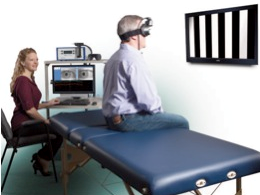
VNG is a computerized system used in the assessment of the oculomotor system (nervous system control of moving your eyes) and the function of those areas of your brain controlling these movements.
The Video Nystagmography (VNG) test is comfortably performed in our office. We simply place special goggles with an infrared camera on your head to record and measure your eye movements in both light and dark conditions.
Specific areas and pathways of the brain are activated during different types of eye movements. During the test computer software is recording and graphing your precise eye movements as you follow the visual target with your eyes. By measuring your recorded eye movements and displaying them on the computer screen you can see your own eye movements and how they compare to normal measurements.
The following eye movements are measured by VNG:
- Gaze Stability: It is essential that the brain stabilizes the gaze of the eyes for proper equilibrium and balance. One of the most common ocular motor deficiencies seen in concussion cases is poor gaze stability. This can be seen on the VNG tracing.
- Pursuits: Pursuits are slow and steady eye movements that allow you to track a moving object. Good smooth pursuits are essential to everyday functions but are particularly important to athletes. The pursuit mechanism is commonly altered in concussion.
- Saccades: Saccades are fast eye movement used to shift a person's gaze from one object to another. Saccades need to be fast and accurate. A concussion can alter the speed and accuracy of a person's saccades causing multiple symptoms.
- Optokinetics (OPK): This is an essential eye movement that allows for visual function as the surrounding visual environment passes by. When these are dysfunctional it can indicate poor brain function.
- Vestibular Ocular Reflex: When you move your head your eyes should move equally in the opposite direction if this reflex is functioning properly. When this reflex is disrupted by concussion it also can create many symptoms especially dizziness and poor gait.
The VNG eye movement tracings provide invaluable neurologic information concerning specific areas of your brain affected by concussion. We are experts at analysing these specific eye movements and determining if they have been disrupted in their proper function. We correlate the VNG findings with our other testing and examination procedures to develop a specific therapeutic program for each individual
Saccadometry
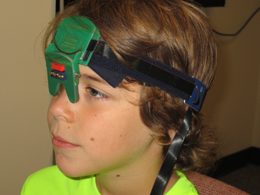
We measure your saccades using saccadometry. Saccades are quick movements of your eyes that allow you to voluntarily move your eyes quickly from one object to another or to react by moving your eyes to a suddenly appearing target reflexively. Saccades can be measured using a device called a saccadometer. The saccadometer is strapped around a patient's head using an elastic headband. Within the unit, there is a laser that projects targets onto the wall that a patient will look at quickly or saccade to. The saccadometer will measure the eye movements at the same time.
Studies have shown this test to be a very accurate way to detect brain dysfunction caused by concussion. This test cannot be altered voluntarily by the athlete because you cannot consciously control the speed of your eye movement during each saccade; your eyes move as fast as they can. The purpose of your saccadic eye movement is to aim the part of your eye with the best vision (fovea) at the thing you want to see most, and then hold your eye there as you examine it.
Saccades are the only human physiological function that uses every area of the brain. It is for this reason that we can evaluate a person's saccades to determine what areas of the brain are not functioning up to par after a concussion.
Some of the brain areas you use in controlling saccades involves three main cortical areas: the frontal eye fields, the parietal eye fields, and the supplementary eye fields; and several subcortical areas in the basal ganglia, thalamus and brainstem.
An area of your brain known as the superior colliculus creates an environmental grid that allows you to know where your body is in space. When you move your eyes quickly using a saccade, your brain computes an exact position of the target within that grid for your eyes to saccade to. Concussion can affect areas of brain that form that grid. If the grid is faulty the saccadic mechanism will be off and this can be measured using saccadometry.
Saccadometry very precisely measures these aspects of saccades:
- Latency: This is the reaction time taken for the saccade to fire or activate after a new stimulus or target is presented. A normal reaction time should be less than 200ms. People who have had a concussion or suffer from neurodegenerative disorders such as Alzheimer's and Parkinson's disease have pathological long saccadic latency times that are greater than 200ms.
- Velocity: The speed of a saccade is highly related to health of areas in the brain stem commonly affected by head injury.
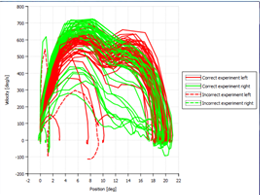 Accuracy: The ability to make the eyes stop and land directly on the target they are saccading to or looking toward is essential to a person functioning in their environment accurately. If the saccade overshoots or undershoots the target it may indicate that the cerebellum or the area of the brain that makes the environmental grid may have been affected by the concussion. Concussion patients with these accuracy areas affected can have serious issues with balance, gait, equilibrium, movement and this may cause dizziness and nausea.
Accuracy: The ability to make the eyes stop and land directly on the target they are saccading to or looking toward is essential to a person functioning in their environment accurately. If the saccade overshoots or undershoots the target it may indicate that the cerebellum or the area of the brain that makes the environmental grid may have been affected by the concussion. Concussion patients with these accuracy areas affected can have serious issues with balance, gait, equilibrium, movement and this may cause dizziness and nausea.
The saccadometer computerized graph shows leftward saccades that are generated by the right brain hemisphere as red and the rightward saccades that are generated by the left brain as green. This can be very useful in determining what side of the brain has been most affected by the concussion
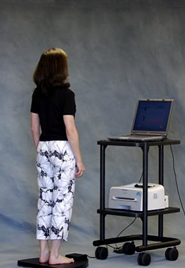 We use Computerized Assessment of Postural Stability (CAPS™) testing performed in our office for assessing how well your brain perceives your body position in space.
We use Computerized Assessment of Postural Stability (CAPS™) testing performed in our office for assessing how well your brain perceives your body position in space.
When a person’s brain is injured almost always their perception of where their body is positioned in space is disturbed affecting their balance. Important areas of the brain react to information that they receive from the nervous system’s sensors or receptors in the body. The brain uses this information to create a somotopic or body map that allows us to have good balance and function as we move through our environment. A concussion can damage these important areas of the brain causing a person to have an altered sense of where they are in space. This deficit can be devastating to a senior’s ability to walk and can be just as bad for the concussed athlete’s balance and body control needed for them to get back to the sport they love.
The CAPS balance and posture stability test uses an extremely sensitive force platform and specially designed software that can measure the otherwise imperceptible and undetectable changes in a person’s balance or what is known as their center of pressure and limits of stability. A person’s center of pressure is closely related to a person’s center of gravity and a person’s limit of stability is how far they can move off of this center without falling. The CAPS will generate a report that quantifies a person’s balance and stability. This will provide an objective score that can be compared to normative data for the patient’s age, height, gender or prior CAPS baseline. This test is essential in diagnosing the effects of the concussion and can be used to monitor progress through care. For more information go to: https://www.vestibtech.com/TBI.html
Concussion baseline testing is for athletes who play contact sports. Our base line is more complete than the typical baseline that only includes some form of neurocognitive testing. Our baseline includes:
- VNG
- Saccadometry
- CAPS
- IMPACT
The neurological therapies or brain stimulations we use are specific and unique for each individual. These therapies are determined by the neurological consultation, the neurological examination and advanced neurological computerized testing. These therapies help restore impaired function by using the concepts of neuroplasticity and the brain's inherent ability to repair itself. The therapies target affected areas with specific activities to rebuild neural pathways. These stimulations are aimed at reactivating the nervous system where abilities have been compromised.
Therapy regimens may include:
- Specific eye exercises based on the testing
- SSEP: somatosensory evoked potential
- Vibration Therapy
- Proprioceptive stimulation
- Vestibular stimulation
- Balance Therapy
- Advanced muscle retraining
- Interactive Metronome
- EYELIGHTS
- Optokinetics
- HemiStim Programs
- Oxygen Therapy
- Saccadometry
Head injuries that result in concussion often are associated with injury to the neck and spine. Joint dysfunction may further impair brain function, when the nerves in the neck that fire back to the brain are not working well. If necessary spinal therapies may include:
Therapy regimens may include:
- Non-Surgical Spinal Decompression: NSSD creates a negative disc pressure and helps to reduce pressure on the nerves. It also provides a slow stretch of the muscles which fires up the spinal cord to increase firing of the brain.
- ATM2 (Active Therapeutic Movement): For patients who have back, neck and/ or hip pain when bending or twisting. Your body has a protective mechanism that prevents damaged tissue from being damaged further. Pain prevents you from moving the damaged tissue into an unsafe position. If the spine is unstable, that defense mechanism will remain even when the damaged tissue is healed.
- Laser/Light Therapy:
-Increases Circulation and Angiogenesis
-Reduces or Eliminates Acute and Chronic Pain
-Reduces Inflammation and Swelling
-Stimulates and Improves Nerve Function
-Strengthens and Repairs Bone and Soft Tissue
-Increases Mobility and Muscle Function
- Biomechanical Chiropractic care and Core Stability Exercises: To correct a poorly aligned spine and to strengthen the muscles that supports the structure of the spine.
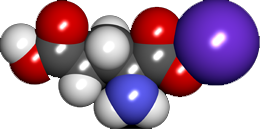 From a metabolic perspective, there are several things that happen following a concussion.
From a metabolic perspective, there are several things that happen following a concussion.
- Increased glutamate levels
- Altered glucose utilization
- Mitochondrial dysfunction
- Reduced available Magnesium
- Brain Inflammation
In the injured brain there is a slow build-up of free radicals, prostaglandins, lipid peroxidation products, inflammatory cytokines and excite-toxins that damage the connections between brain cells, the synapses, axons and dendrites.
The process is mediated by cells called microglia. Once the microglial cells are activated, they tend to persist in this state and can actually create even greater neural inflammation over time
There are specific dietary recommendations and nutritional compounds that can reduce this brain inflammation and make a better environment for brain recovery following a concussion. We combine these evidence-based drug-free dietary recommendations and nutritional supplements with our specific brain therapies to achieve maximal benefit for the post-concussion patient.
We base a patient's specific nutritional needs on their preliminary lab results. The following are some of the lab tests we may run to determine the best nutritional approach each individual concussion patient will need:
Preliminary Lab Testing
The effects of a concussion can be compounded by the person's metabolic health prior to the injury.
- A Complete Metabolic Panel (CMP)
- A Lipid and Thyroid Panel
- A CBC (Complete Blood Chemistry with Auto Differential)
- Vitamin and Mineral Testing (Vit D, B12, Calcium, phosphorus etc)
- Inflammation Testing: We test for Inflammation in your system by testing Homocysteine Levels and C - reactive protein (CRP).
- Iron and Ferritin Testing For Anemia
Some patients suffering post-concussion syndrome are also suffering from a pre-inflammatory processes that compounded the effect of the concussion.
We can assess your thyroid, adrenal, immune, blood and gut function. All can be affecting your brain health. By addressing any problems with your thyroid, adrenal glands, immune system, blood chemistry or gut function, we can help your nervous system to function more properly. The complete metabolic panel allows us to check your blood glucose levels since glucose and oxygen are needed by the brain to function properly.
Special Lab Panels and Testing
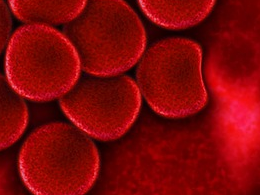 Your preliminary blood testing will let us know if any of the special testing listed below will be necessary in helping you recover from your concussion
Your preliminary blood testing will let us know if any of the special testing listed below will be necessary in helping you recover from your concussion
- Cyrex array 2-Intestinal permeability (Leaky gut testing)
Many concussion patients have a microscopic breakdown of their intestinal wall known as intestinal permeability that may be a result of poor brain function from the concussion or a poor diet prior to the injury. This breakdown called leaky gut will cause the small intestines and colon to become inflamed as well as allow the brain to maintain its inflamed state. An inflamed gut will cause an inflamed brain. The Cyrex labs specialized immune testing for intestinal permeability will determine if you have leaky gut and if so what specific type. There are 3 types of leaky gut, each have a specific treatment approach

The Gut-Brain Connection:
The gastrointestinal system is known as the "Second Brain" and has just as many neurons as the brain itself. Our 2 brains- the one in our head and the one in our bowel- must cooperate. When they do not, then there is chaos in the gut and misery in the head-everything from "butterflies' to cramps, from diarrhea to constipation.
- Cyrex array 3- Advanced gluten sensitivity testing
Concussion sufferers that are also gluten sensitive may have excess gut and brain inflammation from gluten sensitivity. This can compound and multiply the inflammatory cascade caused by the concussion. - Cyrex array 4-Food sensitivity and cross reactive food testing:
Concussion sufferers may also be sensitive to multiple foods beyond gluten. This test will pinpoint what foods are causing excess gut and brain inflammation.
(See CYREX Gut Brain Immune video tab on website) - Stool Microbial Ecology testing
for intestinal bacteria, yeast, parasites and dysbiosis. Eliminating intestinal inflammation will help to reduce overall body and brain inflammation - Adrenal Stress Index (ASI)
We can further test your adrenal glands with a test called an Adrenal Stress Index. Your adrenal glands are your "stress" organs, meaning that they react to stress. If you have been or are currently under stress, this test is a must! When your body's cortisol levels are abnormal, it is a sign that your body's sympathetic nervous system is over-firing. A concussion may cause an over-firing sympathetic nervous system. Abnormal cortisol levels can be corrected via specific neurologic and nutritional protocols.
Specific Nutritional Protocols
These specific nutritional protocols are based on your neurological testing, your blood work findings and your special lab panels. Our goal is to provide the brain with the best metabolic environment to support and obtain the best results from our neurological care. The effects of a concussion can be compounded by the person's metabolic health prior to the injury. These protocols are designed specifically for you and may include any of the following:
- Anti-inflammatory diet
- Specific diet and supplement protocols for leaky gut correction
- Liver detoxification
- Specific diet and supplement protocols to decrease brain and gut inflammation and decrease chronic pain
- Non-drug protocols for high blood sugars, diabetes, hypoglycemia and high cholesterol
- Natural protocols for hypothyroidism
- Nutritional protocols for abnormal adrenal (stress gland) function
- Specific diet and supplement protocols for autoimmunity
- Food sensitivity diet recommendations
- Migraine trigger elimination diets
For information about our Reduced Cost Post-Concussion Recovery Evaluation including our neurological exam, advanced diagnostic testing and Report of Findings please put your name and email in the box below and we will send it to you along with other concussion care tips right away! Thanks!

